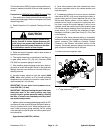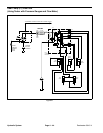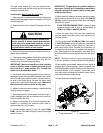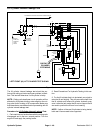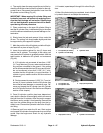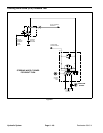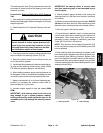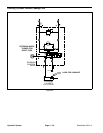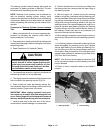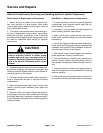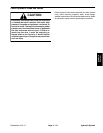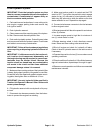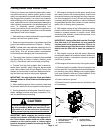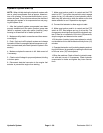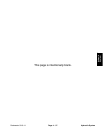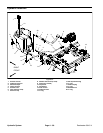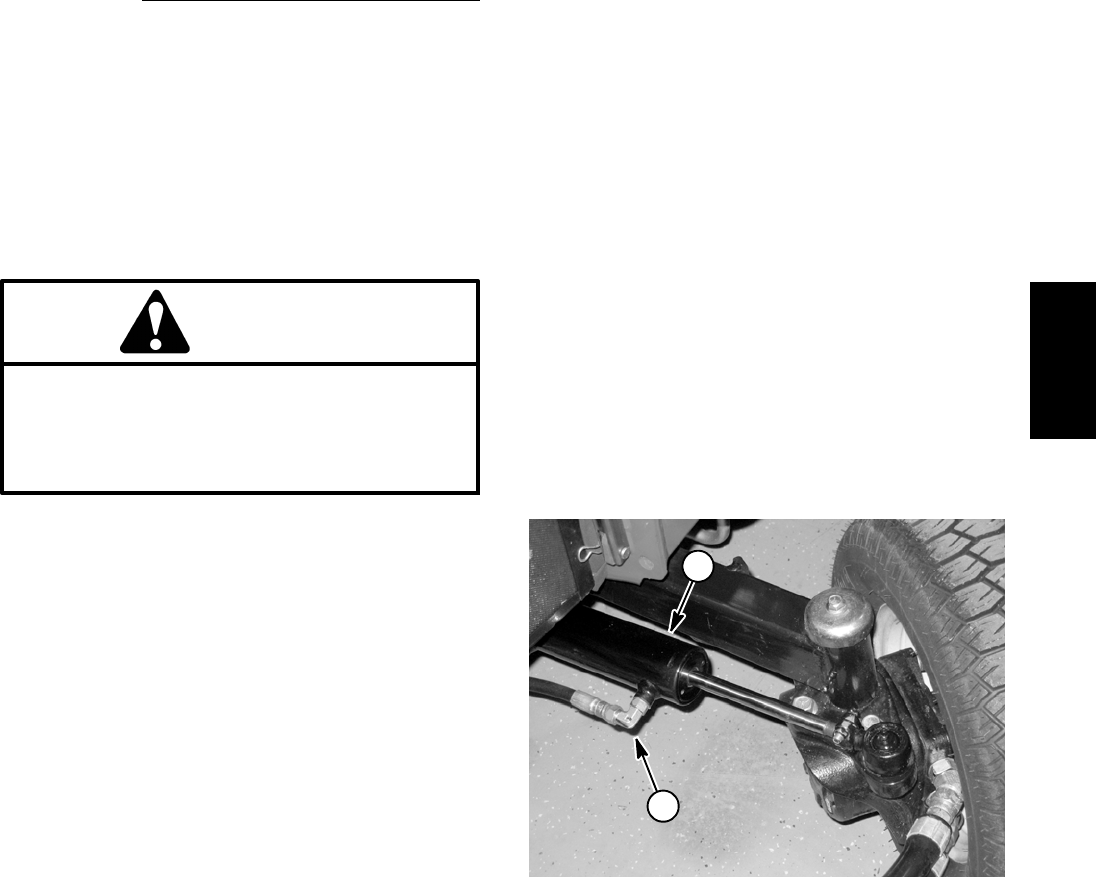
Reelmaster 5010- H Hydraulic SystemPage 4 - 51
The steering cylinder internal leakage test should be
performed if a steering problem is identified. This test
will determine if the steering cylinder is faulty.
NOTE: Steering circuit operation will be affected by
rear tire pressure, steering cylinder binding, extra
weightonthe vehicleand/orbindingofrear axlesteering
components. Make sure that these items are checked
before proceeding with steering cylinder internal leak-
age test.
Procedure for Steering Cylinder Internal Leakage
Test:
1. Make sure hydraulic oil is at normal operating tem-
perature by operating the machine under load for
approximately ten (10) minutes.
2. Parkmachineonalevelsurfacewiththecuttingunits
loweredand disengaged.Make sureengine isoff.Apply
the parking brake.
3. Read Precautions For Hydraulic Testing.
CAUTION
Before opening hydraulic system, operate all hy-
draulic controls to relieve system pressure and
avoid injury from pressurized hydraulic oil. See
Relieving HydraulicSystem Pressurein the Gen-
eral Information section of this chapter.
4. Turnthe steeringwheel fora rightturn (clockwise)so
the steering cylinder rod is fully extended.
5. Thoroughlycleanthe areaaroundthe hydraulichose
at the rod end of the steering cylinder (Fig. 50).
6. Place a drain pan under the steering cylinder. Re-
movehydraulic hosefrom thefittingon therod endof the
steering cylinder. Plug the end of the hose.
IMPORTANT: When capping hydraulic hose end,
use a steel cap to ensure that fluid leakage will not
occur.Plastic plugswill nothold hydraulicpressure
that may be developed during this test procedure.
7. Install a steel plug in the open end of the discon-
nected hose to prevent leakage or contamination.
8. Remove all hydraulic oil from drain pan. Make sure
that empty drain pan remains under the open fitting of
the steering cylinder.
9. With the engine off, continue turning the steering
wheel for a right turn (clockwise) with the steering cylin-
derfully extended.Observe theopen fittingonthe steer-
ing cylinderas the wheel isturned. If oilcomes out of the
fitting while turning the steering wheel to the right, the
steering cylinder has internal leakage and must be re-
paired or replaced (see Steering Cylinder and Steering
Cylinder Service in the Service and Repairs section of
this chapter). Check drain pan for any evidence of oil
that would indicate cylinder leakage.
10.When testingis completed,remove plug fromthe hy-
draulichose. Reconnecthose tothesteering cylinderfit-
ting.
11.If a steering problem exists and the steering cylinder
tested acceptably, the steering control valve requires
service (see Steering Control Valve and Steering Con-
trol Valve Service in the Service and Repairs section of
this chapter).Gearpumpsection(P2) couldalso besus-
pected of wear, damage or inefficiency (see Gear Pump
(P2) Flow Test in this section).
NOTE: If the flow from the 2nd gear pump section (P2)
is low, the traction charge circuit and steering circuit will
both be affected.
12.Check oil level in hydraulic reservoir and adjust if
needed.
1. Steering cylinder 2. Rod end fitting
Figure 50
1
2
Hydraulic
System



